Marcia Thornton Jones's Blog, page 91
November 11, 2019
The Story of the Stories
by Jody Feldman
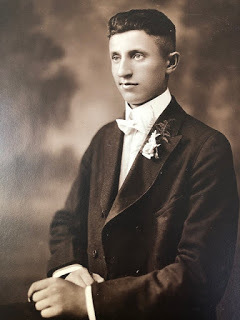 Looking back, I can say that my grandfather was a storyteller. I didn't see him that way, though. He didn't make up stories or play to formal audiences, but he always wanted to tell the true tales of his childhood. And I wanted to hear them. Whenever he'd start telling his peach pie story or the one about the bananas, though, the adults and my older cousins would groan. "We've heard that, Dad," my aunt would say. Except I hadn't heard it.
Looking back, I can say that my grandfather was a storyteller. I didn't see him that way, though. He didn't make up stories or play to formal audiences, but he always wanted to tell the true tales of his childhood. And I wanted to hear them. Whenever he'd start telling his peach pie story or the one about the bananas, though, the adults and my older cousins would groan. "We've heard that, Dad," my aunt would say. Except I hadn't heard it.
My aunt may not have wanted yet another replay then, but thankfully, she understood the value of his stories. So one day she and my dad sat down with my grandfather and with a woman trained in interviewing older adults. I didn't know the cassette tapes existed until five years ago, after my dad had passed away.
There, in my grandfather's voice, was the peach pie story and the banana story. Even more, there was the hay cart story and the record album story and his immigration story, plus the story of his father's less-than-orthodox immigration.
The 90 minutes of stories, though, were not enough. I had so many questions. So many. Sadly, there was no one left who could give me answers. If only I'd thought to ask.
Yes, I'm privileged to have those tapes, a bounty of very colorful family history. But how I wished I'd spoken up. "Tell me a story. Tell me all the stories."
And so I urge you. Find the stories. Ask the questions. Today.
P.S. I drafted a novel that includes many of his stories. I'm undecided whether I'll share this with the world or just with younger generations.
 Looking back, I can say that my grandfather was a storyteller. I didn't see him that way, though. He didn't make up stories or play to formal audiences, but he always wanted to tell the true tales of his childhood. And I wanted to hear them. Whenever he'd start telling his peach pie story or the one about the bananas, though, the adults and my older cousins would groan. "We've heard that, Dad," my aunt would say. Except I hadn't heard it.
Looking back, I can say that my grandfather was a storyteller. I didn't see him that way, though. He didn't make up stories or play to formal audiences, but he always wanted to tell the true tales of his childhood. And I wanted to hear them. Whenever he'd start telling his peach pie story or the one about the bananas, though, the adults and my older cousins would groan. "We've heard that, Dad," my aunt would say. Except I hadn't heard it.My aunt may not have wanted yet another replay then, but thankfully, she understood the value of his stories. So one day she and my dad sat down with my grandfather and with a woman trained in interviewing older adults. I didn't know the cassette tapes existed until five years ago, after my dad had passed away.
There, in my grandfather's voice, was the peach pie story and the banana story. Even more, there was the hay cart story and the record album story and his immigration story, plus the story of his father's less-than-orthodox immigration.
The 90 minutes of stories, though, were not enough. I had so many questions. So many. Sadly, there was no one left who could give me answers. If only I'd thought to ask.
Yes, I'm privileged to have those tapes, a bounty of very colorful family history. But how I wished I'd spoken up. "Tell me a story. Tell me all the stories."
And so I urge you. Find the stories. Ask the questions. Today.
P.S. I drafted a novel that includes many of his stories. I'm undecided whether I'll share this with the world or just with younger generations.
Published on November 11, 2019 04:30
November 8, 2019
Notes from India by Jane Kelley
Ganesha -- The Remover of Obstacles
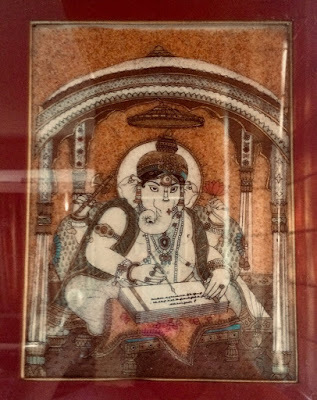
This illustration hung on the wall in the first place we stayed in New Delhi.
I recognized the Hindu god Ganesha, but I had only a superficial understanding of who he was and what he meant until I traveled to India.
I photographed the illustration because Ganesha is writing. That seemed propitious, even though I expected just to record a few observations and events in my travel journal.
Ganesha had a much more important task. The sage Vyasa had conceived of the sacred epic Mahabharata. He asked Ganesha to write it down.
Ganesha agreed, on one condition. Once he began to write, he would not stop.
Vyasa knew how long his epic would be. One hundred thousand verses would be needed to tell the story of a divided family. Their conflict over who will rule results in a catastrophic war that will destroy the world. Amidst the battles and the romances are meditations on the meaning of life. Why haven't we learned to be better? Why are we trapped in cycles of greed, power, and revenge?
The Mahabharata was important; Vyasa accepted Ganesha's terms. But he imposed another condition. Ganesha would not write down anything he did not understand.
And so, over 4000 years ago, Ganesha transcribed the story Vyasa told.
Their conditions confused me. Why write without stopping? Why pause until you understand? The more I thought about them, however, the more sense they made.
Ganesha is also known as the Remover of Obstacles. He blesses new projects. He certainly understands the power of momentum. We must keep going in order to finish. And so he wanted only to write write write. Even when he lost his pen, he broke off one of his tusks and dipped it in ink in order to keep up his pace.
Yes, persistence is important. But that isn't all that matters. It would be foolish to write anything down until we have grasped its meaning.
Ganesha had more to teach me. Look at the illustration again. He has four hands. He can hold more than his book and his pen.
In one of his right hands, he holds an axe to remind us to cut off worldly attachments. In one of his left hands, he holds a lotus blossom to remind us to stay in the moment.
His trunk has flexible power so he can adapt. His big ears require him to listen more than he talks. His big head is full of wisdom. His big belly is large enough to take in the pleasant and unpleasant experiences of the whole world. His small eyes show how he concentrates on his task.
Ganesha needed all those powers to complete the Mahabharata. My project may not be quite as important, and certainly not as long, but I know it will be better––if I write without stopping and pause until I understand.

This illustration hung on the wall in the first place we stayed in New Delhi.
I recognized the Hindu god Ganesha, but I had only a superficial understanding of who he was and what he meant until I traveled to India.
I photographed the illustration because Ganesha is writing. That seemed propitious, even though I expected just to record a few observations and events in my travel journal.
Ganesha had a much more important task. The sage Vyasa had conceived of the sacred epic Mahabharata. He asked Ganesha to write it down.
Ganesha agreed, on one condition. Once he began to write, he would not stop.
Vyasa knew how long his epic would be. One hundred thousand verses would be needed to tell the story of a divided family. Their conflict over who will rule results in a catastrophic war that will destroy the world. Amidst the battles and the romances are meditations on the meaning of life. Why haven't we learned to be better? Why are we trapped in cycles of greed, power, and revenge?
The Mahabharata was important; Vyasa accepted Ganesha's terms. But he imposed another condition. Ganesha would not write down anything he did not understand.
And so, over 4000 years ago, Ganesha transcribed the story Vyasa told.
Their conditions confused me. Why write without stopping? Why pause until you understand? The more I thought about them, however, the more sense they made.
Ganesha is also known as the Remover of Obstacles. He blesses new projects. He certainly understands the power of momentum. We must keep going in order to finish. And so he wanted only to write write write. Even when he lost his pen, he broke off one of his tusks and dipped it in ink in order to keep up his pace.
Yes, persistence is important. But that isn't all that matters. It would be foolish to write anything down until we have grasped its meaning.
Ganesha had more to teach me. Look at the illustration again. He has four hands. He can hold more than his book and his pen.
In one of his right hands, he holds an axe to remind us to cut off worldly attachments. In one of his left hands, he holds a lotus blossom to remind us to stay in the moment.
His trunk has flexible power so he can adapt. His big ears require him to listen more than he talks. His big head is full of wisdom. His big belly is large enough to take in the pleasant and unpleasant experiences of the whole world. His small eyes show how he concentrates on his task.
Ganesha needed all those powers to complete the Mahabharata. My project may not be quite as important, and certainly not as long, but I know it will be better––if I write without stopping and pause until I understand.
Published on November 08, 2019 04:00
November 3, 2019
Journal Me This
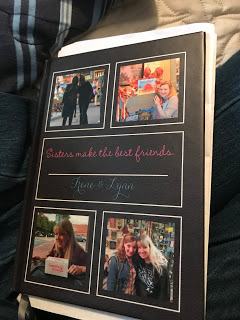 2019 writing journal
2019 writing journalI do most of my writing on a Macbook. I like how “clean” it is, especially compared to my handwriting! But I don't always have my computer with me, so I also use the Notes feature on my phone – and I always always keep a writing journal. My current one was a Christmas gift from my sister. I've been using it for all of 2019, and I rather like the thought of a yearly journal (though it's never quite worked out for me in the past). As we move into the last weeks of the year, I think I'll have just enough pages.
What goes inside the journal? Well, everything!
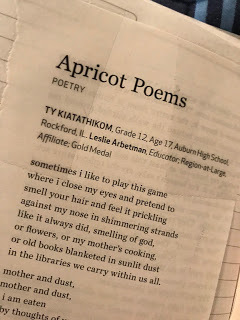 inspiring words
inspiring words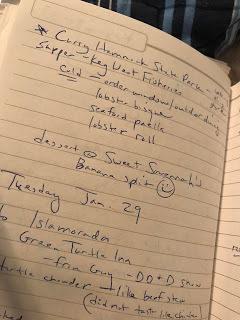 travel notes
travel notes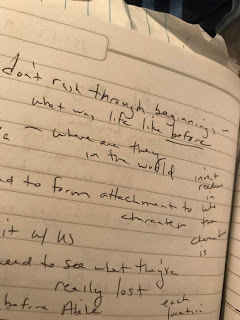 notes from conversation
notes from conversation with editor about wip
 inspiring quotes found
inspiring quotes foundin books I'm reading
 to-do lists
to-do lists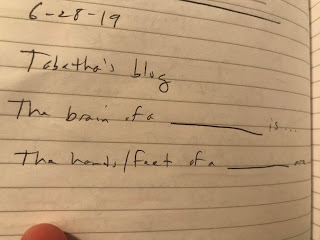 writing prompts found on
writing prompts found onfavorite websites
And here is my response to that writing prompt:
The brain of a lake is rain.Sometimes a mirror, always a weatherwane.
The feet of a lake are fish.How they dart, dash, swish!
The hands of a lake are mud and grass, gentle enough to hold a boat made of glass.
Thanks so much for reading!---Irene Latham lives on a lake in rural Alabama. Winner of the 2016 ILA Lee Bennett Hopkins Promising Poet Award, she is the author of hundreds of poems and nearly twenty current and forthcoming poetry, fiction and picture books from publishers including Penguin Random House, Macmillan, Lerner, Boyds Mills, and Charlesbridge. Her books have been recognized on state lists and honored by NEA, ALA, NCTE, SIBA, Junior Library Guild, Bank Street College and other organizations.
Published on November 03, 2019 03:30
November 1, 2019
Smack Dab News
Michele Weber Hurwitz is pleased to show off the cover of her new middle grade novel, Hello from Renn Lake, which will be released on May 26, 2020 from Penguin Random House/Wendy Lamb Books.
Annalise Oliver and Renn Lake share a deep, mystical, almost unexplainable bond. It's been that way since Annalise was three years old and first heard the lake say hello. The lake has always been a source of comfort and calm for Annalise, whose family has owned and run nearby cabins for generations. But when a patch of algae becomes a harmful bloom, her connection to Renn is gone.
While the authorities debate and discuss and disagree about what to do, Annalise gets frustrated, then angry. Finally, she can't wait any longer. She teams up with her friends -- confident babysitter Maya and science nerd Zach -- and they take a risk to save their beloved lake.
Not only is Hello from Renn Lake a story of community, the power of youth activism, and fighting for the things you love, it's about the strong connection between humans and nature. The bond between Annalise and Renn Lake is the emotional core of this story, and the two discover a way to heal each other.
No further ado - here's the beautiful cover, illustrated by Celia Krampien. More on the story, and the story behind the story, at micheleweberhurwitz.com

Annalise Oliver and Renn Lake share a deep, mystical, almost unexplainable bond. It's been that way since Annalise was three years old and first heard the lake say hello. The lake has always been a source of comfort and calm for Annalise, whose family has owned and run nearby cabins for generations. But when a patch of algae becomes a harmful bloom, her connection to Renn is gone.
While the authorities debate and discuss and disagree about what to do, Annalise gets frustrated, then angry. Finally, she can't wait any longer. She teams up with her friends -- confident babysitter Maya and science nerd Zach -- and they take a risk to save their beloved lake.
Not only is Hello from Renn Lake a story of community, the power of youth activism, and fighting for the things you love, it's about the strong connection between humans and nature. The bond between Annalise and Renn Lake is the emotional core of this story, and the two discover a way to heal each other.
No further ado - here's the beautiful cover, illustrated by Celia Krampien. More on the story, and the story behind the story, at micheleweberhurwitz.com

Published on November 01, 2019 02:00
October 30, 2019
Make It Quick: Good Beginnings and Short Attention Spans, by Chris Tebbetts
Story beginnings are hard for me to nail down. It’s usually when I have the most information I want to impart to the reader (by way of exposition), but it’s also that key moment in my relationship with the audience, where I really want to pull them in with story. As they say, you only get one chance to make a good first impression.
Everyone talks about having a strong hook at the top of your novel. Often, that starts with a great opening line. The classic example in my mind is from CHARLOTTE’S WEB: “Where’s Papa going with that axe?” Talk about immediately established interest, stakes, and story!
But don’t stop there. A good hook might take the form of an immediate problem a character is facing; an action sequence; a simmering promise of something about to happen; a compelling voice; or even a prologue, which is one way to jump right into action and then backtrack for exposition a bit later. Whatever you do, remember that your young reader is sitting there on page one, wondering whether or not this book is going to be worth her time. It’s our job as authors to answer with a resounding yes, and then to keep that promise.

Next question: Where does your story (not your novel, but your story) really begin? Once you know that, see how close to that moment you can get on page one. Some amount of exposition is going to be necessary, of course. But you might be surprised at how much information—things that might seem essential to you, especially in the first draft phase—can actually wait until later. It’s very easy to get attached to everything you want to say up front, but that doesn’t always mean you have to say it right away, or, sometimes, at all. One of the most common pieces of feedback I give in manuscript critiques is about making cuts at the beginning and starting the story more quickly. Sometimes that means cutting a few sentences, a few paragraphs, or even (more often than you might think) a chapter or two.
Is all this focus on fast beginnings the product of a short-attention-span generation? Maybe so, but in practical terms, it is what it is. Linda Sue Park talks about how young readers today come to story first not through words, but through imagery (i.e., on the million screens we have in our lives now), and how it’s up to us, as writers, to keep up with that fact, and to reflect it in our storytelling.
AND MY CAVEAT, ALWAYS: To borrow from Robert McKee's book, STORY, these kinds of writing guidelines are about "form, not formula." Which is to say, if you have a dynamite manuscript with a quiet start or a slow-burn of a beginning, and you're sure that's what the story really needs, then by all means, follow your gut. For every truism and market-driven consideration, there are some countless number of fantastic, convention-breaking books just waiting to be the exception to the rule.
Happy writing!
Everyone talks about having a strong hook at the top of your novel. Often, that starts with a great opening line. The classic example in my mind is from CHARLOTTE’S WEB: “Where’s Papa going with that axe?” Talk about immediately established interest, stakes, and story!
But don’t stop there. A good hook might take the form of an immediate problem a character is facing; an action sequence; a simmering promise of something about to happen; a compelling voice; or even a prologue, which is one way to jump right into action and then backtrack for exposition a bit later. Whatever you do, remember that your young reader is sitting there on page one, wondering whether or not this book is going to be worth her time. It’s our job as authors to answer with a resounding yes, and then to keep that promise.

Next question: Where does your story (not your novel, but your story) really begin? Once you know that, see how close to that moment you can get on page one. Some amount of exposition is going to be necessary, of course. But you might be surprised at how much information—things that might seem essential to you, especially in the first draft phase—can actually wait until later. It’s very easy to get attached to everything you want to say up front, but that doesn’t always mean you have to say it right away, or, sometimes, at all. One of the most common pieces of feedback I give in manuscript critiques is about making cuts at the beginning and starting the story more quickly. Sometimes that means cutting a few sentences, a few paragraphs, or even (more often than you might think) a chapter or two.
Is all this focus on fast beginnings the product of a short-attention-span generation? Maybe so, but in practical terms, it is what it is. Linda Sue Park talks about how young readers today come to story first not through words, but through imagery (i.e., on the million screens we have in our lives now), and how it’s up to us, as writers, to keep up with that fact, and to reflect it in our storytelling.
AND MY CAVEAT, ALWAYS: To borrow from Robert McKee's book, STORY, these kinds of writing guidelines are about "form, not formula." Which is to say, if you have a dynamite manuscript with a quiet start or a slow-burn of a beginning, and you're sure that's what the story really needs, then by all means, follow your gut. For every truism and market-driven consideration, there are some countless number of fantastic, convention-breaking books just waiting to be the exception to the rule.
Happy writing!
Published on October 30, 2019 06:00
October 29, 2019
I Got A Brand New Pair of Roller Skates...
By Charlotte Bennardo
When I was around 9 or so, on Saturday, while my parents worked, my mom dropped my brother and me off at the roller skating rink. For half the day, we skated with tons of kids, retirees, and people who had Saturdays off. Whenever I hear certain music, it brings me back to those days when my brother would hold my hand because it was couples only. He would do it just to continue skating. Now, I don't know where a single rink is, although I've heard some still exist.
Roller skating, whether on a smooth driveway or in rinks or skate parks, has been a big part of so many people's lives and most people know so little about it. Some of the highlights of the history of roller skating are:
* In 1735, John Joseph Merlin brought the first pair of roller skates (basically a pair of shoes with wheels) to a party in London (and he crashed into a mirror).
* Monsieur Petitbled patented roller skates (which had 3 wheels and looked like a low tricycle) in 1819.
* The first 4-wheel roller skate that most people were familiar with was introduced by James Leonard Plimpton.
 Photo courtesy of The Collab, Pexels
Photo courtesy of The Collab, Pexels
* Roller skating became the rage when waitresses skated food to customers (think American Graffiti).
* Skating had its heyday in the 70's - 80's with roller disco.
* Inline skating made a comeback thanks to the modern design of Scott and Brennan Olsen (who patented 'Rollerblading'), and the sport of trick skating was born.
* A National Museum of Roller Skating is located in Lincoln, Nebraska.
* Today, there are dance, figure, and speed skating competitions, roller hockey, and extreme skating. And roller derby is making a splash again.
So go tie on a pair, don't forget your helmet (and maybe knee and elbow pads) and skate to some memories.
 Photo courtesy of Craig Adderly, Pexels
Photo courtesy of Craig Adderly, Pexels
Charlotte is the author of the middle grade trilogy, Evolution Revolution, and co-author of the young adult novels, Blonde OPS, Sirenz, and Sirenz Back in Fashion.
When I was around 9 or so, on Saturday, while my parents worked, my mom dropped my brother and me off at the roller skating rink. For half the day, we skated with tons of kids, retirees, and people who had Saturdays off. Whenever I hear certain music, it brings me back to those days when my brother would hold my hand because it was couples only. He would do it just to continue skating. Now, I don't know where a single rink is, although I've heard some still exist.
Roller skating, whether on a smooth driveway or in rinks or skate parks, has been a big part of so many people's lives and most people know so little about it. Some of the highlights of the history of roller skating are:
* In 1735, John Joseph Merlin brought the first pair of roller skates (basically a pair of shoes with wheels) to a party in London (and he crashed into a mirror).
* Monsieur Petitbled patented roller skates (which had 3 wheels and looked like a low tricycle) in 1819.
* The first 4-wheel roller skate that most people were familiar with was introduced by James Leonard Plimpton.
 Photo courtesy of The Collab, Pexels
Photo courtesy of The Collab, Pexels* Roller skating became the rage when waitresses skated food to customers (think American Graffiti).
* Skating had its heyday in the 70's - 80's with roller disco.
* Inline skating made a comeback thanks to the modern design of Scott and Brennan Olsen (who patented 'Rollerblading'), and the sport of trick skating was born.
* A National Museum of Roller Skating is located in Lincoln, Nebraska.
* Today, there are dance, figure, and speed skating competitions, roller hockey, and extreme skating. And roller derby is making a splash again.
So go tie on a pair, don't forget your helmet (and maybe knee and elbow pads) and skate to some memories.
 Photo courtesy of Craig Adderly, Pexels
Photo courtesy of Craig Adderly, PexelsCharlotte is the author of the middle grade trilogy, Evolution Revolution, and co-author of the young adult novels, Blonde OPS, Sirenz, and Sirenz Back in Fashion.
Published on October 29, 2019 03:30
October 27, 2019
That Time My Friend Accidentally Dumped a Celebrity
When I saw that the themes for this month were roller skating and plotting, I immediately thought of a hilarious story I heard in college.
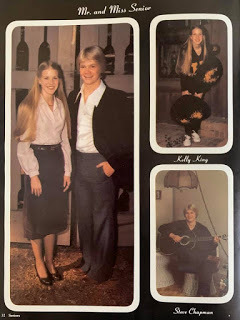
Kelly was the women's counselor for our college ministry, and she had a great story about how she accidentally broke up with Christian singer Steven Curtis Chapman when she was in high school. When I was in college, Chapman was kind of a Christian heartthrob, and girls who heard Kelly's story were aghast that Kelly had let him slip through her fingers. (I'm sure Kelly's husband Wayne, who is a swell guy himself, just loved all those groans about Kelly's rotten luck! But Wayne was not chopped liver, I assure you!) But to me, the story was funny for a couple of reasons: one, Kelly is a great storyteller (seriously, read it for yourself here), and two, the plot thickened at the roller rink. How delightfully 70s is that?
I find that writing for teens is difficult because keeping up with how they communicate is just exhausting. When I wrote my first novel, I had a character who was a mover and shaker in NYC. At the time, a character like that would've had a Blackberry. But imagine how lame that would sound to readers now!
Also, I've always loved plots that involve misunderstandings or lack of information (Shakespeare is with me on this). If Steven Curtis Chapman could've just texted Kelly before she met the cute guy at the roller rink, none of this would've happened, and Kelly would have a much less interesting story. Of course, she might also be married to a bazillionaire and I'd never have met her. But did I mention that Wayne is a great guy? He really is.
Ginger Rue is the author of the Aleca Zamm series from Aladdin and the Tig Ripley series from Sleeping Bear.

Kelly was the women's counselor for our college ministry, and she had a great story about how she accidentally broke up with Christian singer Steven Curtis Chapman when she was in high school. When I was in college, Chapman was kind of a Christian heartthrob, and girls who heard Kelly's story were aghast that Kelly had let him slip through her fingers. (I'm sure Kelly's husband Wayne, who is a swell guy himself, just loved all those groans about Kelly's rotten luck! But Wayne was not chopped liver, I assure you!) But to me, the story was funny for a couple of reasons: one, Kelly is a great storyteller (seriously, read it for yourself here), and two, the plot thickened at the roller rink. How delightfully 70s is that?
I find that writing for teens is difficult because keeping up with how they communicate is just exhausting. When I wrote my first novel, I had a character who was a mover and shaker in NYC. At the time, a character like that would've had a Blackberry. But imagine how lame that would sound to readers now!
Also, I've always loved plots that involve misunderstandings or lack of information (Shakespeare is with me on this). If Steven Curtis Chapman could've just texted Kelly before she met the cute guy at the roller rink, none of this would've happened, and Kelly would have a much less interesting story. Of course, she might also be married to a bazillionaire and I'd never have met her. But did I mention that Wayne is a great guy? He really is.
Ginger Rue is the author of the Aleca Zamm series from Aladdin and the Tig Ripley series from Sleeping Bear.
Published on October 27, 2019 22:00
October 25, 2019
Out of Order (Holly Schindler)
A few years ago, I never would have thought I'd say this, but as far as plotting goes, I'm a big believer in writing non-chronologically.
Sounds counter-intuitive. Like it'd be a big mess.
I've found the exact opposite to be true.
Here's the thing: I'm not a fan of first drafts. And we all know that we write our best work when we're able to tap into the joy of writing.
So how do you maintain joy through a process you generally don't like, a process you want to push through so you can get to the fun stuff (revision)?
By writing out of order. At least, I do.
To be fair, this often works after you've planned out the book by writing some kind of outline. With the outline in hand, you can feel free to simply write scenes. Any scene, that comes at any point in the book. One after the other. Once the scenes are written, you can simply slide them into chronological order, connect them with a narrative thread, then jump into the fun of revising.
When writing out of order, I get to sit down each day to writing I'm excited about. What scene intrigues me the most? That's the scene I'm going to write. It allows me to tap into that feeling of fun, of play. It also keeps me from feeling like every sentence I put down needs to be good. I'm exploring; it's not supposed to be perfect.
The next time you feel like you're having a rough time with a draft, give it a shot: pick a scene you know you want to get to, and just write that. See if that little step doesn't help get you excited about your project all over again...
Sounds counter-intuitive. Like it'd be a big mess.
I've found the exact opposite to be true.
Here's the thing: I'm not a fan of first drafts. And we all know that we write our best work when we're able to tap into the joy of writing.
So how do you maintain joy through a process you generally don't like, a process you want to push through so you can get to the fun stuff (revision)?
By writing out of order. At least, I do.
To be fair, this often works after you've planned out the book by writing some kind of outline. With the outline in hand, you can feel free to simply write scenes. Any scene, that comes at any point in the book. One after the other. Once the scenes are written, you can simply slide them into chronological order, connect them with a narrative thread, then jump into the fun of revising.
When writing out of order, I get to sit down each day to writing I'm excited about. What scene intrigues me the most? That's the scene I'm going to write. It allows me to tap into that feeling of fun, of play. It also keeps me from feeling like every sentence I put down needs to be good. I'm exploring; it's not supposed to be perfect.
The next time you feel like you're having a rough time with a draft, give it a shot: pick a scene you know you want to get to, and just write that. See if that little step doesn't help get you excited about your project all over again...
Published on October 25, 2019 04:00
October 22, 2019
Imaginary Friend Fiction: Smack Dab in the Imagination by Dia Calhoun
When I was little, I had an imaginary friend who wasn't allowed to play with me.
I've had more gasps of astonishment, laughter, disbelief over that line than almost any other. Try it at a cocktail party sometime. I've had so much reaction from the line that I used it as a story prompt at school visits.
I made that line up. It isn't true. I didn't have an imaginary friend who wasn't allowed to play with me. But what interests me is people's reactions to the line/setup. An imaginary friend is supposed to be . . . a friend. Why else make one up? And who in this imaginary world is not letting her play with me. And why not? Story naturally flows. Possibilities open.
The line/setup is so interesting because it seems to contradict conventional ideas about the purpose of imagination as what . . . consolation? Pablum? Doesn't the person doing the imagining have control over what she is imagining?
This is fun. This is imagination.
I've had more gasps of astonishment, laughter, disbelief over that line than almost any other. Try it at a cocktail party sometime. I've had so much reaction from the line that I used it as a story prompt at school visits.
I made that line up. It isn't true. I didn't have an imaginary friend who wasn't allowed to play with me. But what interests me is people's reactions to the line/setup. An imaginary friend is supposed to be . . . a friend. Why else make one up? And who in this imaginary world is not letting her play with me. And why not? Story naturally flows. Possibilities open.
The line/setup is so interesting because it seems to contradict conventional ideas about the purpose of imagination as what . . . consolation? Pablum? Doesn't the person doing the imagining have control over what she is imagining?
This is fun. This is imagination.
Published on October 22, 2019 22:00
October 20, 2019
The Plot Whisperer by Martha Alderson
When it comes to books on writing, like most authors, I have plenty - here are some of my favorites.

But when it comes to plotting, hands down, for me the best book around is Martha Alderson's The Plot Whisperer. As an author who often struggles with plot, I have found Alderson's book to be invaluable in my writing process. Starting with the basics on story structure itself, Alderson breaks down the whole process of plotting. Her use of examples from well-known literature helps readers gain a clear understanding of the plotting techniques she encourages writers to use in order to create a rock solid plot.
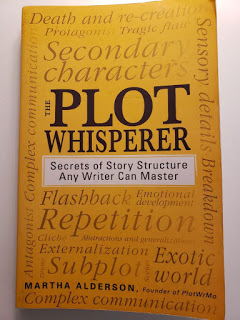
So, if you're an author with plot problems or just want to make the plot of your current work-in-progress stronger and better, pick up a copy of The Plot Whisperer , and like me, you'll likely find yourself returning to it over and over again.
Happy Reading & Writing,
Nancy

But when it comes to plotting, hands down, for me the best book around is Martha Alderson's The Plot Whisperer. As an author who often struggles with plot, I have found Alderson's book to be invaluable in my writing process. Starting with the basics on story structure itself, Alderson breaks down the whole process of plotting. Her use of examples from well-known literature helps readers gain a clear understanding of the plotting techniques she encourages writers to use in order to create a rock solid plot.

So, if you're an author with plot problems or just want to make the plot of your current work-in-progress stronger and better, pick up a copy of The Plot Whisperer , and like me, you'll likely find yourself returning to it over and over again.
Happy Reading & Writing,
Nancy
Published on October 20, 2019 04:30



